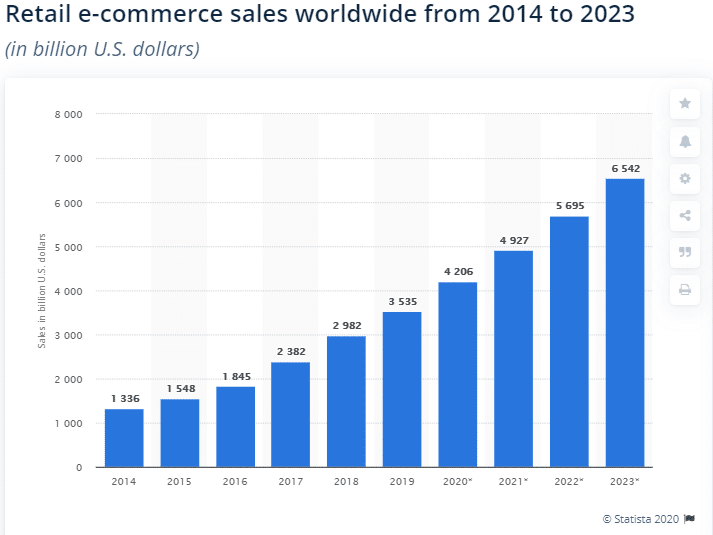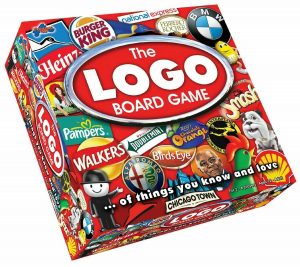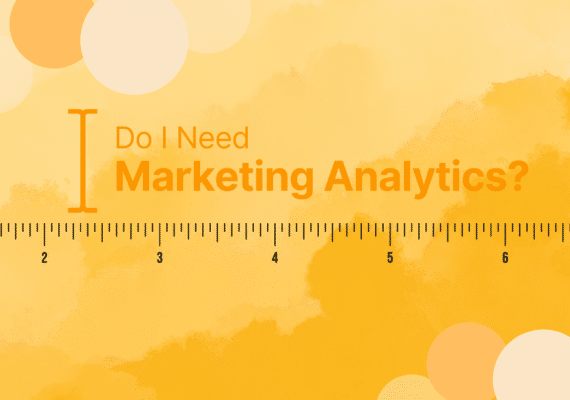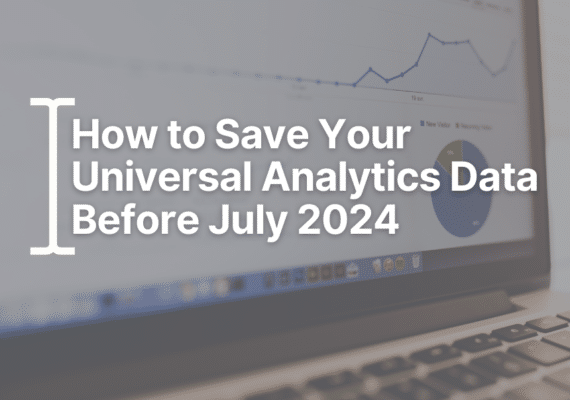If you’re a retail business looking to get more targeted traffic, otherwise known as ‘potential customers’ to your website and increase your conversion rate, this is the guide for you.
The last decade has seen a massive increase in customer demand for online purchases, which is showing no sign of slowing down. This demand will undoubtedly fuel future revenue and growth for retailers.
In this guide, we’ve compiled our years of experience in marketing Retail businesses online. We know that digital marketing is a vast topic, so we’ve broken it down into easy-to-digest sections.
If you have any questions or suggestions on topics to cover, please do let us know in a comment below or get in touch with us directly.
Let’s get to it:
Contents
Retail Digital Marketing Strategy
Any successful digital marketing campaigns start with a strategy.
The digital revolution constantly continues to reshape the retail industry. Whilst e-commerce solutions may be comparatively low cost, customers’ expectations are expanding. Today online retail consumers expect next day or faster delivery times and more convenient ‘click and collect’ routes as just one example.
A digital strategy doesn’t need to be highly complex; but it helps to have a joined-up approach, especially with the many different digital avenues from websites, social media, email marketing etc. If you have a bricks and mortar presence as well, then a retail digital marketing strategy is even more useful and can help drive footfall into stores for customers to have the in-store experience.
Retail Brand Awareness
Brand awareness is talked about a lot but what does it actually mean and what’re the best methods for spreading brand awareness for your retail business?
What is Brand Awareness?
Here’s one definition.… The extent to which consumers are familiar with the qualities or image of a particular brand of goods or services.
Brand awareness is all about people (or in the world of retail; customers) being able remember and recognise a brand. Since business began, brand awareness has always been a consideration in consumer behaviour. It starts as soon as children can talk or point; what child today doesn’t recognise the “M” logo from McDonalds! We blow our noses on a ‘kleenex’ or drink a can of ‘coke’. There’s even a board game all about brand awareness!
How Do We Spread Brand Awareness?
While we can’t all be an Amazon or Apple with a multi-billion dollar brand value, you can drive consumers to make decisions when choosing between you or your competitors.
Brand awareness encourages repeat purchases and leads to an increase in market share, but what channels should you focus on to spread awareness around your brand?
Organic Search (SEO)
SEO can help boost your brand awareness and should be a mainstay of your brand strategy.
Content marketing is one of the best ways to spread the word about your business and brand. It’s a great win-win situation as when you create fresh relevant content for your target audience it also gives the search engines something to digest. The end result is your brand gets stronger.
When content is shared, naturally backlinks follow or that is one aim, which benefits both the branding and the SEO organically.
Display Advertising (PPC)
PPC makes your brand easily findable to your target audience.
You’re in charge and can put your brand and logo in front of the consumers you choose. Getting directly to your potential customers by way of precise targeting, although this relies on having done your homework and knowing and understanding who your target audience.
Display ads let you reach out to new customers while building positive brand perceptions, wherever they are on the web. Remember it’s not about the hard sell but about creating visibility which means retail consumers will recall your brand next time they want to buy or use what you sell.
Paid Social Ads (PPC)
Grabbing consumers attention on social media means standing out from the crowd.
Creating a buzz about your brand also means your paid social ads should be useful or solve a problem for consumers. Hard sell simply doesn’t work well on social media, think about ‘how to’ posts or reasons why your products make life easier, saves times or just plain convenient.
Content Marketing
Another part of building your brand is the user experience, put yourself in the customer’s shoes and think about what you would want to hear.
We’ve already said brand awareness is not all about the hard sell, connecting and resonating with your target audience is fundamental to building your retail brand.
What you can do is tell consumers what you do, over and over but do it differently. Delivering different types of content on different channels but with the same message works.
Content marketing a wide-ranging from traditional blogs to creating videos, infographics and podcasts. Storytelling content is great for brands, but be personable and definitely don’t ask for money, participation, or loyalty.
PR
PR and brand awareness campaigns help to find new customers and grow your retail brand.
Whatever retail sector you operate within, you’re probably an expert in that area, demonstrate that through a podcast or a series of social media posts. Consumers will associate your brand as trustworthy and experienced.
How To Measure Brand Awareness?
If you don’t measure you simply don’t know whether your hard work, costs and efforts are working.
We will probably repeat ourselves throughout this Retail Guide on how important it is to measure and for this, we make no apology.
We will show how you what stats you should be measuring and how you can measure everything in the world digital marketing, starting with measuring brand awareness.
When we talk about measuring results for social media, we don’t put much importance on numbers of followers it’s much more about quality over quantity and engaging with consumers.
When it comes to measuring brand awareness, this changes and one of the best ways to measure who is connecting with your brand is counting who is looking at your website, following you on social and talking about your brand.
Unique Website Visitors
The number of unique visitors to your website is a good metric to measure for brand awareness and can be found on Google Analytics. It’s important to look at unique visitors (users), rather than the number of sessions.
Google Analytics unique website visitors count, ensures that each visitor to the site is only counted once during whatever period you measure by identifying their IP address.
Social Fans/Followers
Monitoring the number of social media fans is relatively simple as all the social channels display this prominently.
You can also see the number of fans and followers on the social media measuring tools such as Facebook Insights and Twitter Analytics.
Brand Mentions
If consumers are talking about your brand, it means you’re doing something right when it comes the raising the awareness of your brand.
Again, the social tools, measure when users connect with your brand, but there is also brand tracking software available.
Brand tracking software not only measures brand awareness but can do this per campaign and track competitor performance. It can help you understand your customers decisions and opinions while tracking any changes in your brand’s health.
To summarise:
Brand Awareness Channels:
- Make Organic Search (SEO) the mainstay of your brand strategy.
- Utilise Display Advertising (PPC) to get your brand message to your target audience.
- Create a buzz or solve problems with Paid Social Ads (PPC) for your brand.
- Content Marketing works better when you put yourself in your customers shoes.
- Demonstrate your experience and trustworthiness through PR and Brand Campaigns
Measure Brand Awareness Success Against:
- Unique website visitors
- Social fans/followers
- Brand mentions
The Consideration Step in the Buying Journey
Once people are aware of your brand, the next stage is getting consumers to engage and begin considering using your service or product.
People buy when they feel comfortable, intrigued and engaged. While the customer is not ready yet to make a purchase, he is prepared to narrow down his options and here’s how you can get that thought process moving in the right direction.
Organic Search (SEO)
Gentle persuasion can help the customer to take a closer look at your products or services.
Using the basic principles of SEO, keyword research is an important factor at this point of the buying journey. The choice of keywords here will differ from awareness, people start looking for solutions which may involve searches for ‘xxx suppliers’ or ‘xxx services’.
Getting the customer to think you and your products could be a viable option and something they need.
Remarketing (PPC)
When it’s time to move the customer along, remarketing ads can be the nudge they need in the right direction.
Targeting those familiar with your brand and who are searching for more targeted keywords is one way to get customer considering your services.
Staying in front of potential customers with Google Display Ads and social media ads at this stage is key to driving engagement and influencing their thought process.
Content Marketing
The content needed now is to demonstrate where the customer has a need to fill or a problem to solve. To let them start to evaluate their options, show how you can remove a
pain point from their life. This could include product comparisons, case studies, downloadables and product guides. A good way to get consumers to engaged is to ask them questions, for example, “Have you ever…” or ask for their opinion.
Email Marketing
Email marketing is good way to nurture potential customers, they’ve committed to your brand and now it’s time to tempt them further.
It’s not the time for the hard sell, but newsletters offering useful information, your company ethos and links to social media platforms etc all guide the customer forward to engage further.
How To Measure Retail Customer Consideration
If you measure your marketing efforts while customers are at this point on their journey, you can maximise your future efforts.
This is because you’ll spend less time and money on engagement channels and approaches that don’t work.
Returning Website Visitors
Measuring the number of returning visitors or those visitors whom have visited your site before is a good benchmark that you are doing something right and they are back for more!
Google sets a 2 year expiration date on “New Visitors”, so if someone has visited your website within the past two years and returns from the same device, they are marked as a “Returning Visitor” in Google Analytics.
You can find this on your Google Analytics dashboard, by selecting “Audience” and then click the “Behaviour” drop down and select “New vs. Returning.”
Bounce Rate
A “bounce” occurs when someone visits your website and leaves without interacting and shows the percentage of your visitors who bounce off of your site.
Google Analytics considers a visitor to have interacted with your site if they visited at least one additional page. You can find your over bounce rate of your website on Google Analytics by selecting “Audience” and then “Overview”.
You can also track the bounce rate of a single page or a segment or section of your site which can be more helpful for reviewing how effective certain content on the site is.
Pages Per Visit
As it says, pages per visit metric in Google Analytics tells you the number of pages a person has visited in one use. At the consideration stage, you want the customer to stay on your site and if they are checking out several pages, chances are they like you.
Email Sign-ups
Measuring the conversion rate of website visitors to email subscribers will help you understand what your audience responds to.
The more subscribers equals more potential customers whom you can reach out to which your messages and products. You can monitor email sign-ups by setting a goal in Google Analytics.
To summarise
Retail “Consideration” Channels:
- Think about keywords customers are searching for and optimise these in your SEO.
- Stay in front of potential customer with Google Display and social media remarketing ads.
- Create engaging and problem-solving content eg. Case studies and product guides.
- Connect with email marketing but without the hard sell.
Measure customer “Consideration” success against:
- Returning website visitors
- Bounce rates
- Pages per visit
- Email sign-ups
Making the Buying “Decision”
Now it gets really exciting and hopefully profitable!
Once people are aware of your brand and have built trust around it, and after carefully considering your products and services, next comes the conversion! This is when the customer makes the decision to click the ‘Buy Now’ button and part with their hard-earned wages.
So how can we utilise the digital channels available to help to give consumers that final push and make the purchase.
Organic Search (SEO)
Search marketing is not only for driving traffic to your website, it can also be used effectively to convert that traffic.
Start by concentrating on product keywords, especially niche and long-tail phrases, SEO for sales is a process of adding keywords in a smart way, while having informative product or service content.
Adding calls-to-action (CTAs) or offering a Live Chat option gives customers a helping hand and a further way to connect to your Customer Service team to convert the sale and help make the buying decision.
Pay-Per-Click Advertising (PPC)
It’s during the decision process of the buying journey where Paid Search ads come into their own.
PPC has a proven track record for conversions, but it’s important to speak your customers language and create effective headlines for your ads in order to convert.
Having said that, it’s absolutely essential to ensure your landing page closes the deal because all the ad clicks in the world won’t help if your landing page doesn’t deliver what your ad promised.
Remarketing (PPC)
A simple but successful method of getting customers to take another look is remarketing.
Whether a shopper has been interrupted, got waylaid or found something better to do online, reminding them about their shopping trip to your site through Google Display ads or social ads could be the final nudge to making the final decision to purchase.
Taking the opportunity to get offers in front of people who have already expressed an interest in your products makes them feel special while providing a helpful reminder service.
Email Marketing
Regaining lost selling opportunities and converting a potential customer is a job for email marketing.
Abandoned cart emails offer a second chance for people to revisit their would-be purchases, you can even offer an incentive for good measure.
Think carefully about the wording you use here, but who wouldn’t be tempted with “Time is running out on your cart! Check out now to enjoy 10% off”.
How To Measure the Decision Buying Process
Conversions
One of the most important metrics to measure is your conversion success.
It’s what all the above work has been for, and now is the time to close the sale. Google Analytics measure conversions such as a completed sign-up for your email newsletter (known as a Goal conversion) or a purchase (a transaction or ecommerce conversion).
E-commerce tracking can be set up using code on your website to enable you to ascertain conversion rates as well as metrics such as revenue/profit and average order value.
Conversion Rate
Google Analytics will calculate conversion rates, for example, the goal conversion rate is calculated as the number of goal conversions divided by the number of sessions, times 100.
For example: if your e-commerce goal is ‘Purchase completed’, every time a purchase is completed it will count as a goal conversion.
To work out the conversion rate of a campaign, you can simply take the number of sales divided by the total number of clicks. For example, if an e-commerce campaign receives 200 clicks and has 50 sales, the conversion rate would be 50 divided by 200, or 25%.
Average Order Rate
Increasing average order value is an important metric to track for any retailer. It allows you to increase return on investment (ROI), which means you increase profitability.
In Google Analytics the average order value can be found in the e-commerce Overview report.
To summarise:
Decision channels:
- Optimise your products and the customer user experience.
- Get conversions with effective Paid Search ads and deliver the right landing pages.
- Utilise Google Display and Social ads to re-market to interested potential customers.
- Send abandoned cart emails and time-sensitive offers to convert missed sales.
Measure the “decision” buying success against:
- Conversions
- Conversion rate
- Revenue/Profit
- Average order value
Post-Sale Engagement
Making the sale isn’t be the end of the sales process.
It’s taken a great deal of effort, time and money to get a customer, keeping that customer is both cost-effective and builds the buyer/seller relationship further.
That’s what post-sale engagement is all about, continuing to engage with them and when they are ready to buy again, you’re their first choice or at least near the top of the list.
In today’s fast-moving digital world, it takes more than average customer service and an email with details about the shipment of their product and tracking. Creating touchpoints with your customer after the sale can have long-lasting effects.
Social Media
Connecting to existing customers through your social media channels lets you introduce new products, create offers and introduce loyalty schemes to inspire them to stay connected and go on to purchase further.
If you can encourage engagement, through reviews, comments on social posts etc these customers then also help with promoting sales and raising brand awareness.
Email Marketing
Taking the opportunity to email the customer after a purchase lets you tailor the email promoting similar purchases or cross-selling, for example, shoes or accessories that go with their new dress.
You could offer a discount on a repeat purchase if appropriate or the chance to join a loyalty scheme. This all creates and ensures a sense of satisfaction in the customer and makes them feel important.
How to Measure Post-Sale Engagement?
Interactions with customers following their first purchase will often influence whether they come back, but what should you be measuring when it comes to post-sale engagement?
Customer Lifetime Value
As retailers well know, guiding customers to purchase is only a small step.
Measuring the customer lifetime value (CLV) is the metric that indicates the total revenue a business can reasonably expect from a single customer. It takes into account a customer’s revenue value and compares that to the company’s predicted customer lifespan.
We know it costs less to keep an existing customer than it does to get a new one, so increasing the lifetime value of your existing customers can grow your business and profits.
Review scores
Asking customers for reviews works in three ways for you as a retail business.
Firstly, it gives a reliable information source for prospective customers, an estimated 80% of buying decisions online are influenced by customer reviews.
Secondly, it helps to improve brand awareness and finally, you can utilise review scores to measure customer satisfaction and to identify any problems or issues.
To summarise:
Post-Sale Engagement Channels:
- Continue engaging existing through social media to encourage further purchases
- Send personalised emails offering new products, offers and reward loyalty.
Measure post-sale engagement success against:
- Customer lifetime value
- Review scores
Over to You…
So there we have it, you should now have the basic tools to take your retail business to the next level.
Remember, while this was designed to cover as much ground as possible in a single guide, each and every business is different so the advice above will need to be tailored to yours.
If you’re struggling to dedicate time to your digital marketing, or need help taking your strategy to the next level, ask our team about retail digital marketing and talk to one of our experts.








